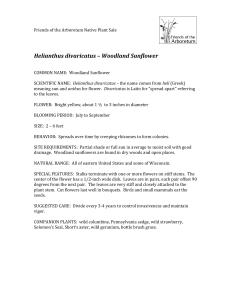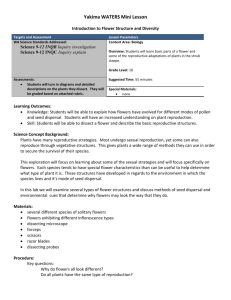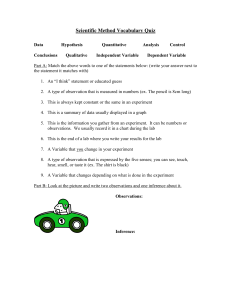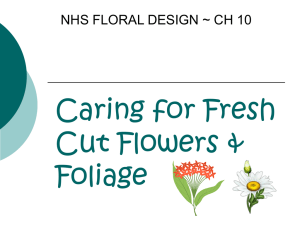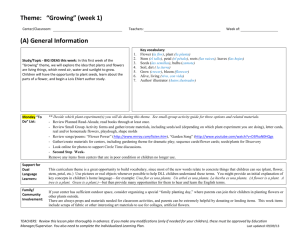Parts of the Flower - ed105B36term2-2012-13
advertisement
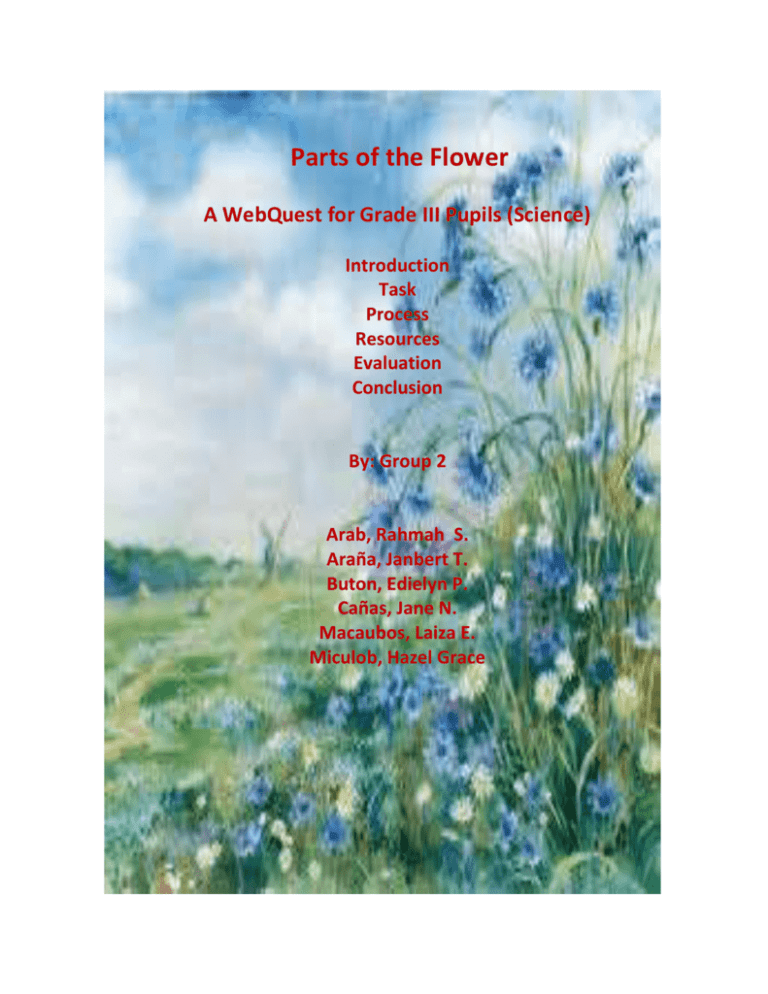
Parts of the Flower A WebQuest for Grade III Pupils (Science) Introduction Task Process Resources Evaluation Conclusion By: Group 2 Arab, Rahmah S. Araña, Janbert T. Buton, Edielyn P. Cañas, Jane N. Macaubos, Laiza E. Miculob, Hazel Grace Introduction As we look around in our environment we can see a lot of things that can be classified as living or non-living things such as trees, plants, roads, houses, clouds and many others. Hence, flower is one of the things that we can see around us. Flowers really catch our attention as it is colorful and beautiful indeed. Actually, a flower is the reproductive structure found in flowering plants. The biological function of a flower is to produce seeds. The process begins with pollination, followed by fertilization, leading to the formation and dispersal of the seeds. Task As science class pupils, you are assigned to collect different kinds of flowers especially those are big enough to examine the parts like gumamela. You will be divided into five groups to perform the activity. Process Step 1: The class will be divided into groups that contain five members each. Each group member should participate and have a specific role to do. Member 1 and 2 Member 3 and 4 Member 5 Do a research and collect the different flowers available in their area and should list the names of the flowers. Identify the different specific parts of each flower and define each function. Finalize the written report and also help in identifying the part. Step 2: You will begin to perform this activity by doing some research about the parts of flowers. Step 3: After, if you have enough background you can start to do the said activity. Step 4: Finalize the output of the group and conduct a peer evaluation. Resources For your ease, we have provided already the different kind of web sites, but you can also do some additional research. An introduction to flowers http://artoflegendindia.hubpages.com/hub/An-Introduction-to-Flowers Anatomy of flowers http://www.familymanagement.com/holidays/flowers/flower_anatomy.html The parts of the flower http://www.amnh.org/learn/biodiversity_counts/ident_help/Parts_Plants/parts_of_flower.htm Flowering plants http://waynesword.palomar.edu/trmar98.htm Functions of plant parts http://www.qldscienceteachers.com/junior-science/biology/functions-of-plant-parts Evaluation Your group presentation will be graded as follows: Criteria A. CONTENT 1. Are the example of flowers properly named? 2. Are the parts of flowers properly identified? 3. Are the parts of flowers clearly illustrated by graphics? 4. Are the parts of flowers properly discussed? 5. Is the type of flower example identified? 6. Is/Are flowers use as samples are appropriate? 7. Are the photo captions informative? 8. Are the flower plant samples collected are enough? 9. Are the photos for each plant sample properly labelled? B. MECHANICS/FORMAT 1. Is the format correct? 2. Is the presentation neat? 3. Are the photos clear and taken from the right perspective? 4. Are there no errors in the spelling and grammar? 5. Was the group report submitted on time? 6. Is there an electronic and print copy of the Yes (2 points) Partly (1 point) No (0 point) report? The perfect score for the group report is 50 points. Individual grades for this project will be computed as follows: Item Percent of Project Grade Group Report 70% Self-assessment 15% Peer evaluation 15% Conclusion If you have done your activity well and you have worked as a team, you will surely come up with a very good result and a very good grade. Also, you will be able to appreciate the flowers more and its importance in this beautiful world. Additionally, this activity helps you build teamwork and collaboration.


